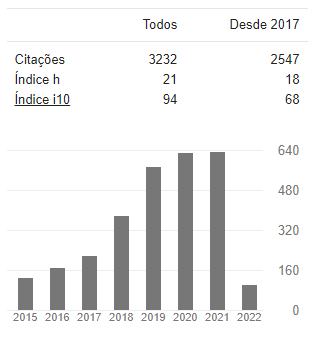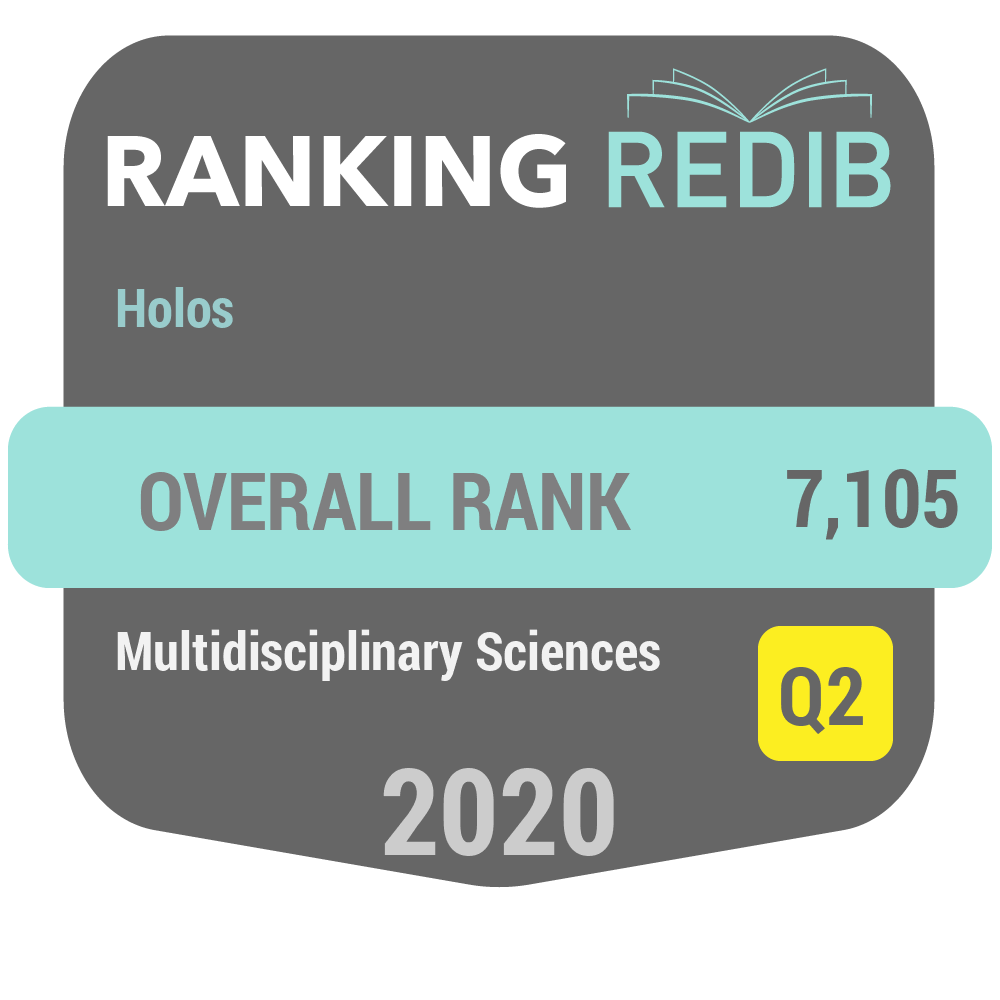REGULAMENTAÇÃO SOBRE ARMAZENAMENTO GEOLÓGICO DE CO2 NO BRASIL
DOI:
https://doi.org/10.15628/holos.2021.10712Palavras-chave:
mudança climática, CCS, regulamentação, mineração e petróleoResumo
A tecnologia de captura e armazenamento de carbono (CCS) tem recebido muita atenção desde os anos 1990, pois foi escolhida como uma opção para mitigar a mudança climática. Os marcos legais e regulatórios necessários para o amplo desenvolvimento dessa tecnologia são considerados incipientes na maioria dos países, como no Brasil. Este estudo mostrou que o Brasil não possui leis específicas para a regulação do CCS. Pôde-se concluir que o Brasil pode se basear na regulamentação existente na indústria de mineração e petróleo para desenvolver uma regulamentação específica sobre CCS. Foi possível observar, com base nas regulamentações vigentes no Reino Unido, UE, Dinamarca, Austrália, EUA e no Canadá, que para a regulamentação ser efetiva, considerar fatores como a clareza e a eficiência do processo administrativo de solicitação para aprovação de projetos de CCS e responsabilidade de longo prazo para fechamento, monitoramento e liberações acidentais de CO2 é essencial.
Downloads
Referências
Alberta Energy (2016). Carbon Capture and Storage Legislation and Policy. http://www.energy.alberta.ca/CCS/3844.asp (accessed 1 July 2016).
Ampomah, W., Balch, R.S., Cather, M, Will, R., Gunda, D., Dai, Z., Soltanian, M.R. (2017). Optimum design of CO2 storage and oil recovery under geological uncertainty, Applied Energy, 195, 80–92. https://doi.org/10.1016/j.apenergy.2017.03.017.
Arnette, A.N. (2017). Renewable energy and carbon capture and sequestration for a reduced carbon energy plan: An optimization model. Renewable and Sustainable Energy Reviews, 70, 254–265.
Asayama, S., Ishiib, A. (2017). Selling stories of techno-optimism? The role of narratives on discursive construction of carbon capture and storage in the Japanese media. Energy Research & Social Science. http://dx.doi.org/10.1016/j.erss.2017.06.010
Bachu, S. (2008). CO2 storage in geological media: Role, means, status and barriers to deployment. Progress in Energy and Combustion Science, 34 (2), 254–273, 10.1016/j.pecs.2007.10.001.
BIAA (Barrow Island Amendment Act) (2015). Assented to 8 May 2015. www.slp.wa.gov.au
Bonham, S., Chrysostomidis, I. (2012). Regulatory Challenges and Key Lessons Learned from Real World Development of CCS Projects. In: CO2 Capture Project, Final Report. http://www.co2captureproject.org/reports/regulatory_study.pdf (accessed 31 May 2016).
Bowen, F. (2011). Carbon capture and storage as a corporate technology strategy challenge. Energy Policy, 39 (5), 2256–2264, doi:10.1016/j.enpol.2011.01.016.
Brasil, 2010. Act n° 7.390, 9 December 2010. http://www.planalto.gov.br/ccivil_03/_Ato2007-2010/2010/Decreto/D7390.htm (accessed July 2016).
Brownsort, P.A., Scott, V., Halzeldine, R.S. (2016). Reducing costs of carbon capture and storage by shared reuse of existing pipeline—Case study of a CO2 capture cluster for industry and power in Scotland. International Journal of Greenhouse Gas Control, 52, 130–138.
Câmara, G.A.B., Andrade, J.C.S., Ferreira, L.E.A., Rocha, P.S. (2011). Regulatory framework for geological storage of CO2 in Brazil: Analyses and proposal. International Journal of Greenhouse Gas Control, 5 (4), 966–974. Doi: 10.1016/j.ijggc.2010.12.001
CÂMARA, G. A. B.; ROCHA, P. S.; ANDRADE, J. C. (2011) Carbon Dioxide Geological Storage Technology: World Overview and Brazilian Situation. VII National Congress of Excellence in Management, Rio de Janeiro, 12 -13 August 2011. (Available in Portuguese).
CCSA (Carbon Capture and Storage Association) (2016). CCS Policy and Regulation. http://www.ccsassociation.org/why-ccs/policy-and-regulation-for-ccs/ (accessed 7 May 2016).
CEPAC (Center of Excellence in Research and Innovation in Petroleum, Minerals Resources and Carbon Storage) (2016). http://www.pucrs.br/cepac/ (accessed 3 July 2016).
Commonwealth of Australia (Australia) (2006). Offshore Petroleum and Greenhouse Gas Storage Act 2006, n. 14. https://www.legislation.gov.au/Details/C2017C00051/Html/Volume_1 (accessed 28 June 2016).
Davies, L.L., Uchitel, K., Ruple, J. (2013). Understanding barriers to commercial-scale carbon capture and sequestration in the United States: An empirical assessment. Energy Policy, 59, 745–761. https://doi.org/10.1016/j.enpol.2013.04.033.
Dean, M., Tucker, O. (2017). A risk-based framework for Measurement, Monitoring and Verification (MMV) of the Goldeneye storage complex for the Peterhead CCS project, UK. International Journal of Greenhouse Gas Control, 61, 1–15. https://doi.org/10.1016/j.ijggc.2017.03.014
Denmark. Danish Energy Agency (2011). Consolidated Act on the Use of the Danish Subsoil, no. 960, 13 September 2011. http://www.ens.dk/sites/ens.dk/files/oil-gas/licences/legislation-and-guidelines/ca2011_960en.pdf (accessed 24 June 2016).
Dixon, T., Mccoy, S.T., Havercroft, I. (2015). Legal and regulatory developments on CCS. International Journal of Greenhouse Gas Control, 40, 431–448. https://doi.org/10.1016/j.ijggc.2015.05.024
EPA (U.S. Environmental Protection Agency) (2016). Climate Change. https://www.epa.gov/laws-regulations (accessed 28 May 2016).
European Commission (EC) (2014). Support to the review of Directive 2009/31/EC on the geological storage of carbon dioxide (CCS Directive). Luxembourg: Publications Office of the European Union, pp. 1–194. http://www.qualenergia.it/sites/default/files/articolo-doc/CCS-Directive-evaluation-Final-Report%281%29.pdf.
Gale, J. (2004). Geological storage of CO2: What do we know, where are the gaps and what more needs to be done? Energy, 29, 1329–1338. https://doi.org/10.1016/j.energy.2004.03.068.
Global CCS Institute (2015a). Global CCS Institute CCS Legal and Regulatory Indicator: A Global Assessment of National Legal and Regulatory Regimes for Carbon Capture and Storage, pp. 1–27. ISBN 978 0 9944115 1 8. https://hub.globalccsinstitute.com/sites/default/files/publications/196443/global-ccs-institute-ccs-legal-regulatory-indicator.pdf (accessed 2 April 2016).
Global CCS Institute (2015b). The Global Status of CCS: 2015. Summary Report, Melbourne, Australia, pp. 1–18. https://hub.globalccsinstitute.com/sites/default/files/publications/196843/global-status-ccs-2015-summary.pdf (accessed 2 April 2016).
Global CCS Institute (2016). The Global Status of CCS: 2016. Summary Report, Australia, pp. 1–28. http://hub.globalccsinstitute.com/sites/default/files/publications/201158/global-status-ccs-2016-summary-report.pdf (accessed 14 May 2017).
Holloway, S. (2005). Underground sequestration of carbon dioxide: A viable greenhouse gas mitigation option. Energy, 30 (11–12), 2318–2333. doi:10.1016/j.energy.2003.10.023.
IEA (International Energy Agency) (2007). Legal Aspects of Storing CO2: Update and Recommendations. OECD Publishing, pp. 1–144. ISBN 978-9264034082
IEA (2010). Carbon capture and storage: Model regulatory framework. IEA information paper.
IEA (2015). Carbon Capture and Storage: The solution for deep emissions reductions. IEA Publications, pp. 1–12.
IEA (2015b). Energy Technology Perspectives: Mobilising Innovation to Accelerate Climate Action, IEA. pp. 1–45. https://www.iea.org/media/etp/etp2015/ETP2015_WEBINAR_16OCT_allpresentations_web.pdf (accessed April 2017).
IEA (2016). Energy Technology Perspectives 2016. Towards Sustainable Urban Energy Systems. OECD/IEA,2016.https://www.iea.org/publications/freepublications/publication/EnergyTechnologyPerspectives2016_ExecutiveSummary_EnglishVersion.pdf (accessed 24 June 2017).
IPCC (2005). Special Report on Carbon Dioxide Capture and Storage. Prepared by Working Group III of the Intergovernmental Panel on Climate Change, Metz, B., Davidson, O., de Coninck, H.C., Loos, M., Meyer, L.A. (Eds.). Cambridge University Press, Cambridge, UK and New York, pp. 1–442.
IPCC (2014). Climate Change 2014: Mitigation of Climate Change. Prepared by Working Group III of the Fifth Assessment Report to the Intergovernmental Panel on Climate Change, Edenhofer, O., Pichs-Madruga, R., Sokona, Y., Farahani, E., Kadner, S., Seyboth, K., Adler, A., Baum, I., Brunner, S., Eickemeier, P., Kriemann, B., Savolainen, J., Schlömer, S., von Stechow, C., Zwickel, T., Minx, J.C. (Eds.). Cambridge University Press, Cambridge, UK and New York, pp. 1–1454.
Kapetaki, Z., Hetland, J., Guenan, T.L., Mikunda, T., Scowcroft, J. (2017). Highlights and lessons from the EU CCS demonstration project network. Energy Procedia, 114, 5562–5569.
Leeson, D., Mac Dowell, N., Shah, N., Petit, C., Fennell, P.S. (2017). A techno-economic analysis and systematic review of carbon capture and storage (CCS) applied to the iron and steel, cement, oil refining and pulp and paper industries, as well as other high purity sources. International Journal of Greenhouse Gas Control, 61, 71–84. https://doi.org/10.1016/j.ijggc.2017.03.020.
Legislative Assembly of Alberta (2010). Carbon Capture and Storage Statutes Amendment Act. Third Session, 27th Legislature, 59 Elizabeth II. http://www.assembly.ab.ca/ISYS/LADDAR_files/docs/bills/bill/legislature_27/session_3/20100204_bill-024.pdf (accessed 1 July 2016).
Lipponen, J., McCulloch, S., Keeling, S., Stanley, T., Berghout, N., Berly, T. (2017). The politics of large-scale CCS deployment. Energy Procedia, 114, 7581–7595.
Loáiciga, H.A (2013). CO2 Capture and geologic storage: the possibilities. Groundwater, 51 (6), 816–821. doi: 10.1111/gwat.12041.
Mechleri, E., Brown, S., Fennell, P.S., Dowell, N.M. (2017). CO2 capture and storage (CCS) cost reduction via infrastructure right-sizing. Chemical Engineering Research and Design, 119, 130–139. https://doi.org/10.1016/j.cherd.2017.01.016.
Neumann, P.P., Asadi, S., Bennetts, V.H., Lilienthal, A.J., Bartholmai, M. (2013). Monitoring of CCS areas using micro unmanned aerial vehicles (MUAVs). Energy Procedia, 37, 4182–4190. https://doi.org/10.1016/j.egypro.2013.06.320
Nykvist, B. (2013). Ten times more difficult: Quantifying the carbon capture and storage challenge. Energy Policy, 55, 683–689. https://doi.org/10.1016/j.enpol.2012.12.026.
Praetorius, B., Schumacher, K. (2009). Greenhouse gas mitigation in a carbon constrained world: The role of carbon capture and storage. Energy Policy, 37 (12), 5081–5093. https://doi.org/10.1016/j.enpol.2009.07.018.
RMCMI (2016). RMCMI (Rocky Mountain Coal Mining Institute). http://www.rmcmi.org/education/carbon-capture-storage#.WjQDFzdG3cc (accessed 20 June 2016).
Rohlfs, W., Madlener, R. (2013). Investment decisions under uncertainty: CCS competing with green energy technologies. Energy Procedia, 37, 7029–7038. https://doi.org/10.1016/j.egypro.2013.06.638.
SEEG. Greenhouse Gas Emission and Removal Estimation System. GHG emissions in Brazil and its implications for public policies and the Brazilian contribution to the Paris Agreement. (2018). http://seeg.eco.br/wp-content/uploads/2018/08/Relatorios-SEEG-2018-Sintese-FINAL-v1.pdf. (Accessed 29 August 2018) (Available in Portuguese).
Selosse, S., Ricci, O. (2017). Carbon capture and storage: Lessons from a storage potential and localization analysis. Applied Energy, 188 (15), 32–44. https://doi.org/10.1016/j.apenergy.2016.11.117.
Shogenova, A., Piessens, K., Holloway, S., Betham, M., Matínez, R., Flornes, K.M., Poulsen, N.E., Wójcicki, A., Sliaupa, S., Kuchari?, L., Dudu, A., Persoglia, S., Hladik, V., Saftic, B, Kvassnes, A., Shogenov, K, Ivask, J., Suárez, I., Sava, C., Sorin, A., Chikkatur, A. (2014). Implementation of the EU CCS Directive in Europe: results and development in 2013. Energy Procedia, 63, 6662–6670. https://doi.org/10.1016/j.egypro.2014.11.700.
Stigson, P., Hansson, A., Lind, M. (2012). Obstacles for CCS deployment: an analysis of discrepancies of perceptions. Mitigation and Adaptation Strategies for Global Change, 17 (6), 601–619. https://doi.org/10.1007/s11027-011-9353-3.
Tan, Y., Nookuea, W., Li, Hailong., Thorin, E., Yan, J. (2016). Property impacts on Carbon Capture and Storage (CCS) processes: A review. Energy Conversion and Management, 118, 204–222. https://doi.org/10.1016/j.enconman.2016.03.079.
Terwel, B.W., Harinck, F., Ellemers, N., Daamen, D.D.L. (2011). Going beyond the properties of CO2 capture and storage (CCS) technology: How trust in stakeholders affects public acceptance of CCS. International Journal of Greenhouse Gas Control, 5 (2), 181–188. https://doi.org/10.1016/j.ijggc.2010.10.001.
Tomski, P. (2015). Carbon Capture and Storage: A vital low carbon technology that can deliver on economic development, energy security and climate goals. Global CCS Institute, Oct. 2015, pp. 1–29. https://hub.globalccsinstitute.com/sites/default/files/publications/197003/carbon-capture-storage-vital-low-carbon-technology-deliver-economic-development-energy-security-climate-goals.pdf.
USA Federal Register (2010). Mandatory reporting of greenhouse gases: injection and geologic sequestration of carbon dioxide; final rule. Environmental Protection Agency. Federal Register, 75 (230), 75059–75089 (accessed January 2017).
Windén, B., Chen, M., Okamoto, N., Kim, D.K., McCaig, E., Shenoi, A., Wilson, P. (2013). An Investigation into the logistical and economical benefits of using offshore thermal power in a future CCS scheme. Energy Procedia, 37, 2997–3004. https://doi.org/10.1016/j.egypro.2013.06.186.
Yang, Y., Li, Y., Zhang, S., Chen, F., Hou, H., Ma, J. (2017). Monitoring the impact of fugitive CO2 emissions on wheat growth in CCS-EOR areas using satellite and field data. Journal of Cleaner Production, 151 (10), 34–42. https://doi.org/10.1016/j.jclepro.2017.03.058.
Zeroco2 (2017). List of CCS Projects. http://www.zeroco2.no/projects/list-projects (accessed 20 July 2016).









































